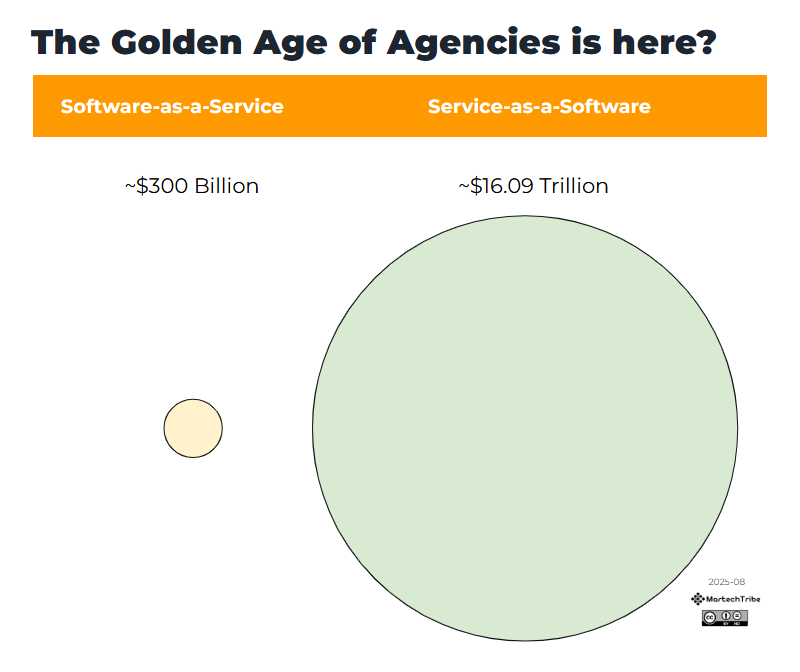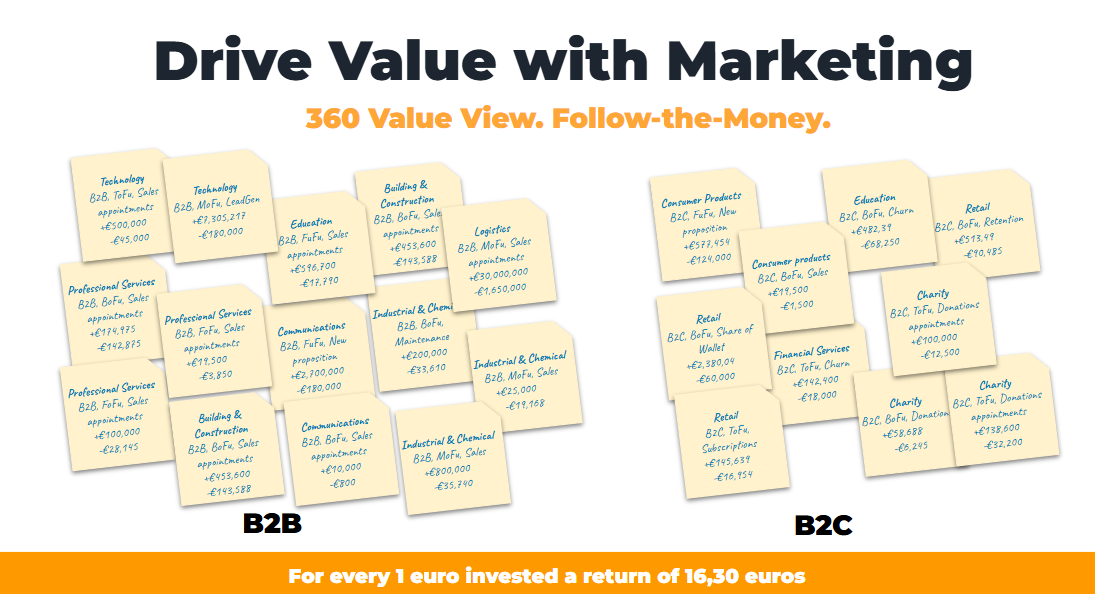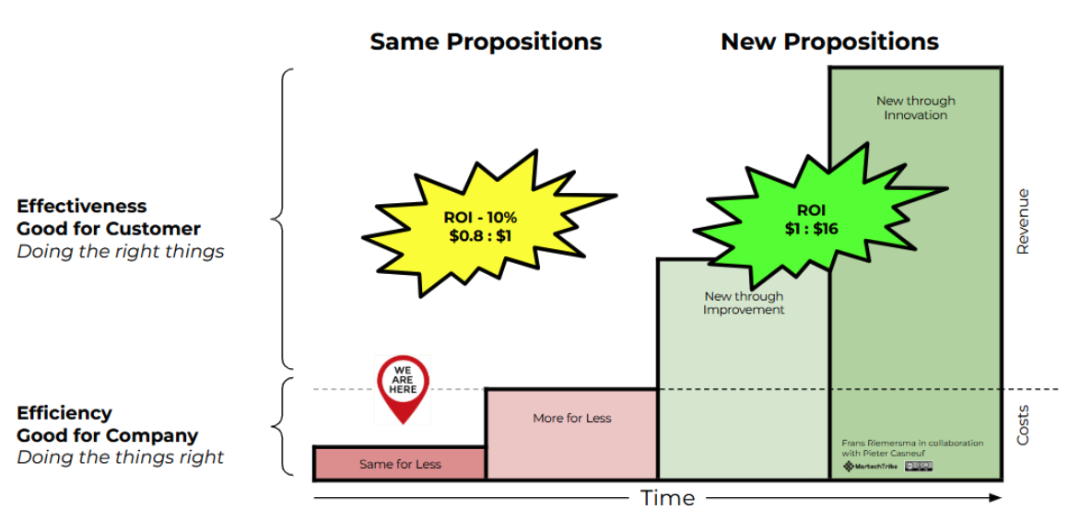
Which vendor to pick for your MarTech stack? In one year the amount of Martech vendors grew with 51% to 1,876. Learn how 21 other marketers composed their stacks.
The Marketing Technology Landscape of 2015 shows 1,876 vendor logos across 43 categories. A vendor increase of 51% compared to the year before. And there are many more comparable MarTech overviews. How can you still find the needle MarTech stack? How to compose your own stack? We had a close look at real life stacks to see what type of software and vendors are most frequently mentioned. These are the 3 things we learned.
It can be helpful to learn how your peers have built up their stacks. It can serve as an inspiration or benchmark, as long as you keep one thing in mind. Scott Brinker couldn’t have said it more clearly: “there is no universally right or wrong marketing stack — all that matters is that your stack works for you.”
For sure, you want to prevent gaps and overlaps in your own marketing technology stack at all costs. Both gaps and overlaps are the result of different fiefdoms in large corporate environments behaving like organisms rather than organizations.
Sharing learnings and consolidating systems inside your marketing technology stack will definitely boost your marketing results. Imagine all the costs for double licensing, wasted efforts on double entries or searches, and difficulties reporting to management.
For over a decade we helped marketers to map and design their marketing operations stack, the Marketing Resource Management (MRM) or Marketing Operations Management (MOM). We have seen a lot of gaps and overlaps, and learned how to avoid both. Here are two simple steps to take to avoid them. Let’s call it the gaps & overlaps stack analysis.
Map the stack
The first thing to do is to pick your marketing technology canvas. You can design your own or use an existing one, such as the Stack Solution or Growthverse. If you focus on marketing operations only, then use the Ten Functional Areas canvas.
Map your technology against one (or more) of these canvases and the gaps and overlaps will surface. It is a necessary and rewarding exercise. In the MRM space we found the following striking facts about software overlaps in stacks.
- 7% of the brands have more than 1 MRM tool in place. One proper MRM tool per brand normally suffices.
- 7 brands licensed 6 or more MRM tools in their company. In the case of these 0,2% of the brands, the love for MRM software just got “out of hand”.
Connect the stack
The second thing to do is to integrate your marketing stack, not only technology-wise, but also business-wise. Starting with the business side makes a lot of sense. Ask yourself, what goals and objectives are we trying to achieve as a marketing function? What are the programs, campaigns and activities? By which KPI’s are we measuring the results? The business integration is supported by tools such as Klipfolio, Kibana and Boardview.
With the business picture in mind, the technology pieces of the marketing puzzle will all fall more easily into place. You will be able to search for a software suite to meet your business requirements or connect your stack technology-wise with tools like Zapier or If This Than That (IFTTT).
Three things we can learn from 21 MarTech stacks
Wouldn’t it be great if we could see what type of marketing software is used most frequently for which purpose? Our obvious answer is ‘yes’ and so we decided to map 179 vendors of 17 stacks against 9 Growthverse categories.
For the lack of extensive research data, we had a close look at a sample of Stackies collected by Scott Brinker: the 21 Stackies. We skipped 4 anonymous or somewhat incomplete stackies, and ended up analyzing 17 marketing technology stacks in total. As a canvas, we used the 9 Growthverse categories.
The idea behind our exercise is simple: What rules can we extract by looking at the combination of 17 stacks and the canvas categories? By looking at the 17 stacks we are able to draw conclusions on stack composition, canvas categories and vendor frequency.
#1. The 17 Marketing stacks consist of 18 tools on average
• In 17 marketing stacks combined, 179 unique vendors are mentioned.
• 17 stacks have on average 18 tools. Some have up to 35 tools, others no more than 10.
• 148 vendors (83%) are mentioned only once.
• 31 of the vendors (17%) are mentioned in more than one marketing stack.
• Only Salesforce and Google Analytics are mentioned in more than half of the stacks.
#2. The most covered category is Acquisition
Growthverse is “built for marketers, by marketers, with input from more than 100 CMOs”. Growthverse mentions 9 different solutions, marketing functions, or marketing software categories. We mapped the 179 vendors of the 17 stacks against the Growthverse categories. This tells us which categories are most frequently covered by the 17 stack owners.
Marketing Automation (22%) and Content Marketing (18%) top the list. But if we sum up the three ‘acquisition’ categories it makes a top score of 29% (bullet 3, 5 and 6).
Here is the full list.
• 22% Marketing automation
• 18% Content marketing
• 10% Paid/Organic acquisition
• 12% Analytics
• 10% Paid acquisition
• 9% Organic acquisition
• 6% Retention (Email)
• 5% Collaboration
• 3% Online campaign management
• 4% Customer experience
• 2% Data centralization
As you can see, we had to add two additional categories to the 9 Growthverse categories.
One new category is Paid/Organic Acquisition. The reason is that in quite a few cases we were not able to deduct form a particular stack if a tool was used for paid or organic acquisition or both. So we decided to add the Paid/Organic acquisition category.
The other one is Online promotion campaign management. The reason here is that Salesforce Pardot was often mentioned in the stacks, but not categorized in Growthverse overview at the moment of publication of this blog post.
#3. Top 3 vendors per category
For each category we found that some vendors surfaced more than others. This tells us which vendors are most frequently acquired by the 17 marketing technology stack owners.
Marketing Automation
1. Salesforce
2. Marketo
3. Optimizely
Paid / Organic acquisition
1. Linkedin
2. Twitter
3. Facebook
Analytics
1. Google Analytics
2. Crazy Egg
3. HootSuite
Content marketing
1. Wordpress
2. Buffer
3. Sprout Social and Wistia (equal score)
Organic acquisition
1. Moz
2. HootSuite
3. Facebook
Paid acquisition
1. Google Adwords
2. Google
3. Bright Talk
Retention (Email)
1. Mailchimp
Collaboration
1. Slack
2. Trello
Online campaign management
1. Salesforce Pardot
Customer experience
1. Adobe Creative Cloud
2. Survey Monkey
3. Canva
Data centralization
1. No “winner” - not one vendor was mentioned more than once.
How to get most out of your stack?
If you want to optimize your stack then try the four exercises in your organization today.
1. Map your stack to detect gaps and overlaps by using a canvas.
2. Connect your stack and integrate business- and technological-wise.
3. Select stack solutions, i.e. canvas function which drives most business value.
4. Select stack vendors for each of the canvas solutions you selected.
Feel free to share your thoughts and results with us.




